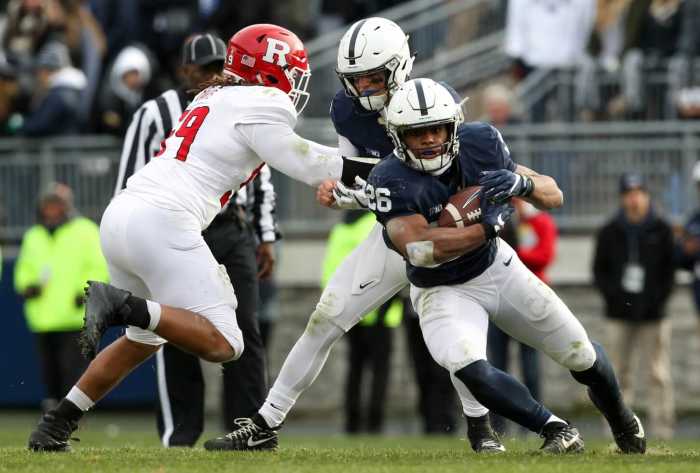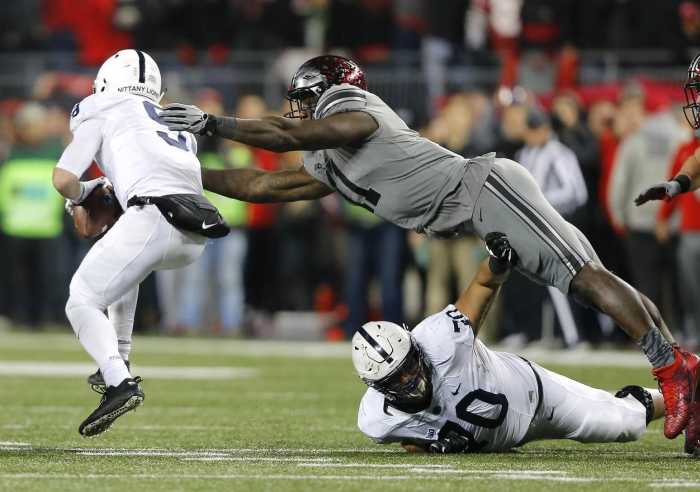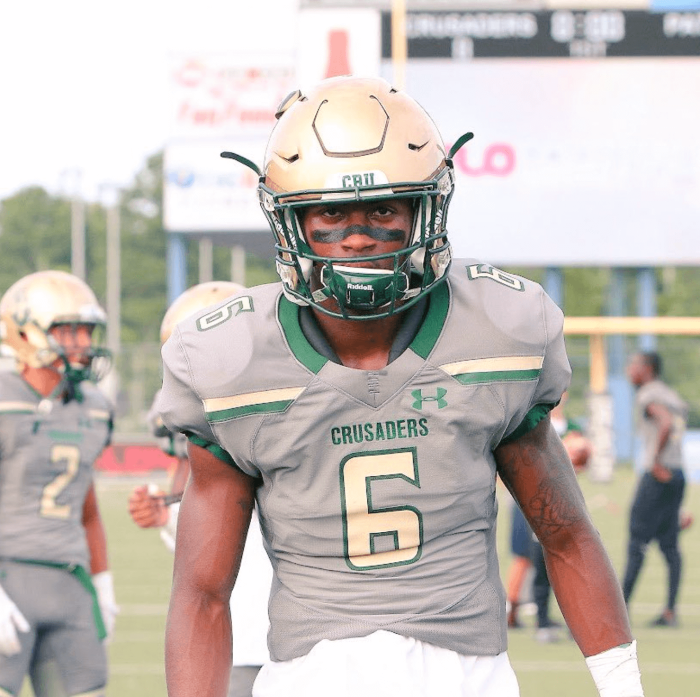Before we dive any further into the four things we learned from this past weekend’s blowout win over Maryland, I’d first like to apologize to you. For any and all that have read my preview articles throughout the season with any form of consistency, I’d like to give my apologies for not posting a game preview for Maryland this weekend. I got caught up in the craze of the holiday weekend, spending time with family and such, as well as working most of the weekend, that I was unable to produce the clarity and context that I believe is necessary in order to publish a piece. For those looking for said piece, only to find it nonexistent, my sincerest apologies.
Let’s move onto the conclusion of this game though. I don’t know if a constructed piece previewing this game would have even done the outcome justice. I spoke highly of Maryland’s performance to open the season against Texas and believed that the Terps may have held claim to a better season than in years past. What I could not have anticipated was Penn State going into College Park and shellacking Maryland 66-3. I don’t believe anyone could have. So while I do apologize for not posting an article on Friday, it may not have even mattered because the predicted score I would have given was much closer than the true outcome.
Everything went according to plan for Penn State. The opposite is true for Maryland. Nothing worked for the Terps this past weekend, as the team was simply outclassed by Penn State from the onset.
In wins such as this, it’s difficult to find the true, deeper meaning behind the contest. But as we have all season long, let’s dig a little deeper and look back at four things we learned from this rout of Maryland, as the Nittany Lions finish the regular season 10-2 for the second consecutive year.
1. The Offense Was A Well Oiled Machine
When a team scores 66 points, it’s fairly unnecessary to say that the offense was efficient, good, electric, or insert an adjective to describe their play. It’s simply redundant. But what does need to be mentioned is the relative ease in which the Nittany Lions scored, how they went up and down the field on the Maryland defense, securring touchdown after touchdown. Penn State received the opening kickoff, and 11 plays and 91 yards later, were in the endzone when Tommy Stevens rushed from 21 yards out in the weekly, “Keep Tommy from transferring package.” From there, the team would score on four of its next seven possessions, adding three touchdowns and field goal to go into halftime leading 31-0. Three different Nittany Lions would score those touchdowns, including rushing touchdowns by Saquon Barkley and Trace McSorley, and a touchdown through the air from Mcsorley to Mike Gesicki.
If the first half seemed like a cakewalk, then the second was indescribably effortless. The Nittany Lions scored touchdowns five of their six possession in the second half, resulting in 35 of the second half’s 38 points, leading to the 66-3 romp. Barkley found the endzone twice more before being removed from the contest. He finishes the regular season with 16 rushing touchdowns and 19 touchdowns on offense. Add two kick return touchdowns, and Barkley finishes the season with 21 total touchdowns. Tommy Stevens used his legs to score twice more in the second half and his arm once, finding backup tight end Tom Pancoast from four yards out for a score, the first touchdown of the senior’s career.
It was mastery over an opponent from start to finish for the Nittany Lions, who scored their most points in a single game since dropping 62 on Purdue last October. The team has now scored 122 points over the last two weeks, and has scored at least 42 points in exactly half of their game this season. This offense has been dominant all season long. Imagine if the team could have four points back over a two week stretch. We’d bee talking about two undefeated teams squaring off for the Big Ten title. Unfortunately we can’t play in what if’s.
2. Tommy Stevens Is Going To Make Another Team Very Happy In Two Years
When your backup quarterback produces four touchdowns in one game, you know your offense clicked. Tommy Stevens continues to show, should he transfer at the conclusion of the season, that he could be the starting quarterback for many teams in two years time. I say two years, of course, because Stevens will be required to sit out next season if he were to transfer, per collegiate rules.
I’ve taken the liberty to dive deeper into this matter to see how many teams Stevens wouldn’t start for should he transfer. I look into the wouldn’ts instead of the woulds, because it would be a tedious and unfulfilling task for me to say that he’d start for X amount of teams. We all know he’d be the starting quarterback of just about every team in a large number of conferences.
But I went into looking at which teams I don’t know if he’d start for. I’ve come up with five teams in which I strongly believe that Stevens would not be the starter for. While some teams may force him into a quarterback comepetition, I believe five he would lose the job without a strong effort propelling him forward.I have removed any quarterback that will be eligible for the NFL Draft and will likely go, or any that will have graduated by the time Stevens could play.
First, I’ll start with USC. While USC is going to be losing Sam Darnold to the NFL Draft sometime in the next two years, and he wouldn’t be an issue for Stevens, I think that the Trojans are extremely high on 2019 commit JT Daniels and could use him as a true freshman starter if he’s ready. Even with commit Matt Corral backing out of his commitment to USC, the Trojans will have Daniels waiting in the wings and ready to go immediately if needed.
Now, onto teams that have their starting quarterback still around, for the time being, when Stevens would be eligible. I have four such teams: Georgia, Auburn, Notre Dame and Arizona. Jake Fromm has been a revalation for Georgia, stepping in for injured starter Jake Eason and never relinquishing the job. He’d be tough to supersede at this point. Jarrett Stidham has Auburn knocking on the door of a playoff appearance. The only place he’d be going is the NFL Draft. Brandon Wimbush is a more athletic Tommy Stevens, and would beat Stevens in an outright competition. Finally, there’s Khalil Tate from Arizona, who has run his way into the hearts of many who can stay up late to watch the Pac 12 play. While he’s not a better quarterback that Stevens, he is possibly the best athlete in the country, leaving little room for a competition.
Should Stevens transfer, there would be six teams in which he would not start, Penn State being one of them. That means, barring competition or poor play, Stevens could be a legitimate starter for 121 of 127 teams, with Idaho and New Mexico State moving back to the FBS level next season.
3. Penn State’s Running Game Is In Safe Hands
When the calendar flips to 2018 in a few weeks, and the Nittany Lions walk off the field for the final time this season, Saquon Barkley will likely never put on a Penn State jersey again as he prepares to be a top ten pick in the NFL Draft come April. So where does that leave the Penn State rushing attack? In pretty capable hands, if you ask me. Miles Sanders was given the chance to play more than usual in this one. He received seven seven carries for 42 yards. While the six yards per carry average is stellar, one must note that he did rush for 31 yards on one run. Regardless of the pedestrian numbers outside of the big run, Sanders is ready to step in and be the work horse next season for the Nittany Lions. In two seasons, he’s carried the ball 50 times for 360 yards and two scores. That’s a 7.2 yards per carry clip he’s operating under. While that will be difficult to maintain over the course of a full season, Sanders has the quickness and the moves to make many defenders miss. In his final season at Woodland High School, Sanders ran the ball 97 times for 1132 yards and 18 touchdowns. He’s ready.
While Sanders is ready to step in a fill the large shoes left by Saquon Barkley, he won’t have to do it alone. Sanders will be joined by Andre Robinson, Journey Brown and incoming recruit Ricky Slade. The quadrant will all jump in the massive hole and plug it a little bit at a time. No one back will emerge as the bell cow right away for James Franklin, as I believe he’ll likely go by committee until one starter emerges. Sanders will almost assuredly get the first crack at the bulk of the touches come September 1 when Appalachian State comes into Beaver Stadium.
4. An Ohio State Loss Would Benefit Penn State
Penn State will not be representing the Big Ten East in the conference title game this coming weekend. Instead, it will be Ohio State. But a Buckeye loss would be immensely helpful to Penn State’s New Years’ Six Bowl chances. Despite the fact that Ohio State beat Penn State and is playing for the conference title, a loss to Wisconsin would help Penn State chances of playing on New Years’ Day. The Badgers would improve to 13-0, will have won the Big Ten, and will likely be heading to the College Football Playoff. At least they should be. If that turns out to be so, it eliminates one team from playing in the six New Years’ Day games. It also would eliminate Ohio state from contention of those games with a third loss. While losing in the conference title game is nothing to scoff at, it still will hurt the Buckeyes in the eyes of the bowl schedule creators. A third loss, despite beating Penn State head-to-head, would likely drop them under the Nittany Lions. If four teams, including Wisconsin are playing for the Nationals Championship, and Ohio State falls outside with a third loss, that means there will be the losers of the SEC and ACC title games, along with possibly Alabama as teams to garner bids for those games. UCF will also get one as the highest rated non-AQ team. That still leaves plenty of room for Penn State to grab one of those invitations. An Ohio State loss, and subsequent Wisconsin win, will go a long way to suring up a 2018 bowl appearance instead of one prior to New Years for the Nittany Lions.
Mandatory Credit: Mitch Stringer-USA TODAY Sports
























